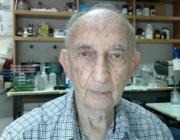Abstract:
Human neutrophils (PMNs) stimulated by sub-toxic concentrations of cetyltrimethyl ammonium bromide (CETAB) (37 μmol/L) generated intense luminol-dependent chemiluminescence (LDCL) and moderate non-amplified chemiluminescence (CL), but, paradoxically, generation of superoxide (as assayed by cytochrome c reduction, lucigenin-dependent chemiluminescence, nitroblue tetrazolium reduction test (NBT), spin trapping or hydrogen peroxide (Thurman reaction) and also oxygen uptake, were not observed. LDCL generation, however, was dependent on the viability of the PMNs. On the other hand, CETAB failed to induce CL in PMNs obtained from two children with an X-linked chronic granulomatous disease of childhood. CETAB inhibited superoxide generation by PMNs stimulated by phorbol-12-myristate-13-acetate (PMA), histone or polyhistidine-opsonized streptococci. It also inhibited NBT reduction in PMNs stimulated by PMA or by cationized streptococci. Generation of LDCL by CETAB-stimulated PMNs was inhibited by azide, cyanide, thiourea, dimethylthiourea, histidine, cimetidine, chloroquine, nordihydroguaiaretic acid and bromophenacyl bromide and partially so, about 50%, by superoxide dismutase (SOD), by TEMPOL (a SOD mimetic) and H-7, a protein kinase c inhibitor, but not by catalase, desferrioxamine, taurine or methionine. PMNs stimulated by CETAB in the presence of azide generated a large peak of LDCL when treated with horseradish peroxidase (HRP), suggesting that hydrogen peroxide, perhaps of intracellular origin, was involved. Such enhanced HRP-stimulated light emission was inhibited by catalase and by desferrioxamine, suggesting that the HRP-catalysed reaction also depended on some source of trace metals. CETAB also markedly enhanced CL generated by a cell-free mixture of hydrogen peroxide and HRP, which was quenched to a large extent by catalase, dimethylthiourea or desferrioxamine, again suggesting that light emission might be linked with trace metals present in the salt solutions employed. It is postulated that CETAB-induced CL in human PMNs is the result of the interaction of hydrogen peroxide, presumably of intracellular source, a trace metal, and a peroxidase (myeloperoxidase). This phenomenon might be unrelated to the classical respiratory burst, which is always accompanied by oxygen consumption, and to the generation of a variety of oxygen-derived species linked with the activation of the NADPH oxidase present in the cell membrane.
